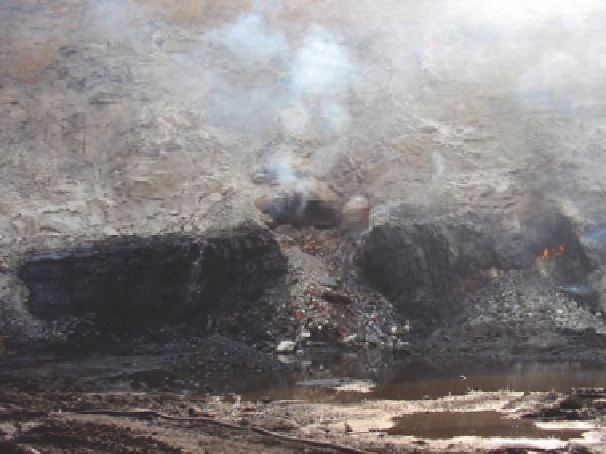Geology Reference
In-Depth Information
88°
20°
88°
25°
Katras
Dhanbad
N
Dhanbad
23°
45°
Delhi
Jharia
Jharia
coalfield
Calcutta
Madras
0
2 km
Figure 6.1.3. Location of the Jharia coalfield, India. The figure shows in red the location and extent of coal fires in
the eastern part of the coalfield. Figure by Anupma Prakash, 2000.
Figure 6.1.4. Coal fire in an open-pit mine in the Jharia coalfield, India. People who work in such mines are
exposed to toxic gases, particulate matter, and the risk of ground subsidence. Photo by Prasun Gangopadhyay,
2006.
addition, the illegal distillation of alcohol in abandoned underground mines is purported to be the origin of some
JCF fires (Stracher et al., 2002). At present, approximately 37 million tons of coal has been lost to JCF fires and
approximately 1453 million tons are locked up under fire (BCCL, 2003).
As in China and Pennsylvania, JCF fires are responsible for environmental degradation and human suffering
(Figure 6.1.5). Noxious vapors and toxic fly ash that pollute air, water, and soil promote human disease including
lung and skin as well as asthma and chronic bronchitis. In addition, land subsidence, endangered and inoperable
rail lines, displaced communities of people, increased mining hazards, overburden dumps, the destruction of floral
and faunal habitats, and the loss of coal as a valuable resource are products of these fires (Saraf, et. al., 1995; Gupta
and Prakash, 1998; BCCL, 2003; Sierra Club, 2003). According to the National Center for Atmospheric Research


